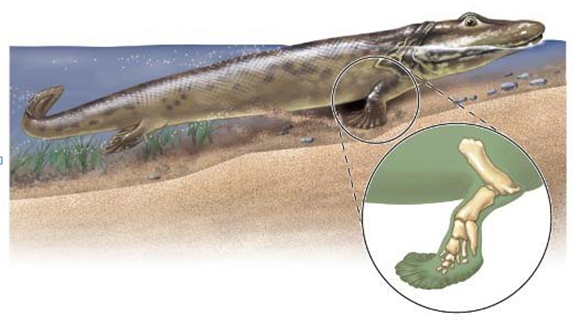Over several generations in a population, inbreeding tends to
A. stabilize the balance of genotypes predicted by the Hardy-Weinberg equilibrium.
B. decrease the likelihood of heterozygotes.
C. decrease the relative proportions of homozygotes.
D. All of the choices are correct.
Answer: B
You might also like to view...
The forelimbs of Tiktaalik have bones, but are fringed with fins instead of toes (see figure). Which of the following is the best explanation for this observation?

A. This species was an evolutionary dead end, which is why no modern species have both bones and fins on their forelimbs.
B. This is a common ancestor to all of the modern fish species that have bones in their forelimbs.
C. This is a transitional fossil, and the species has not yet lost its fins.
D. This is a common ancestor to all of the modern amphibian species that have fins on their forelimb.
E. This is a transitional fossil, and the species has not yet lost its arm bones.
Two organisms using a portion of the same resource simultaneously is referred to as
A) niche overlap. B) competitive release. C) intraspecific competition. D) territoriality.
If a tRNA molecule that is specialized for the transfer of the amino acid valine has the anticodon CAG, it will couple with the codon
A) GTC. B) GUC. C) CAG. D) GAC. E) TUG.
What do geneticists use along with historical records to track traits through many generations of a family?
A. Epidemiology B. Punnett square C. DNA polymorphisms D. Mitochondrial analysis E. Pedigree